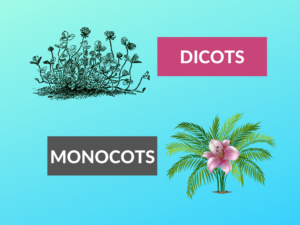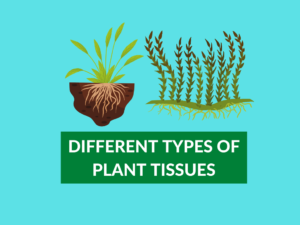Monocot and Dicot Leaf: A Comprehensive Comparison
Welcome to our in-depth article on the differences between monocot and dicot leaves. If you are curious about plant anatomy and want to understand the contrasting characteristics of these two types of leaves, you’ve come to the right place. Read on to discover the fascinating world of monocot and dicot leaves.
What is/are monocot?
Monocot leaves belong to plants classified as monocotyledons, which are one of the two major groups of flowering plants. Monocotyledons, commonly known as monocots, have embryonic leaves with a single vein pattern. Their leaves usually possess parallel venation, where the veins run parallel to each other from the base to the tip of the leaf.
Examples of monocot:
Some common examples of monocot plants include grasses (such as maize and rice), lilies, orchids, and palms. These plants exhibit distinctive features in their leaves, stems, and roots, which we will explore further in this article.
Uses of monocot:
Monocot plants have numerous practical applications in our daily lives. They are widely cultivated for their economic value, providing food, medicine, and ornamental beauty. Cereals like wheat, barley, and oats are monocots and serve as staple food sources for many cultures around the world. Additionally, bamboo, a type of grass, is used for construction, furniture, and papermaking.
What is/are dicot leaf?
Dicot leaves belong to plants classified as dicotyledons, the second major group of flowering plants. Dicotyledons, commonly known as dicots, have embryonic leaves with a branched vein pattern, known as reticulate venation. The veins form a network-like pattern throughout the leaf surface.
Examples of dicot leaf:
Dicots encompass a wide range of plants, including trees, shrubs, and most familiar garden plants. Some notable examples of dicots are roses, apples, sunflowers, maples, and beans. The diversity of dicots is apparent in their leaf structure and their distinctive plant features.
Uses of dicot leaf:
Dicot plants have immense importance in agriculture, horticulture, and pharmaceutical industries. Many dicots are cultivated for their fruits, vegetables, and ornamental flowers. Additionally, several dicot plants have medicinal properties and are used in herbal remedies or as sources of active compounds for pharmaceutical drugs.
Differences Table:
| Difference Area | Monocot Leaf | Dicot Leaf |
|---|---|---|
| Vein Pattern | Parallel venation | Reticulate venation |
| Leaf Structure | Narrow and elongated with parallel sides | Broad and often wider towards the tip |
| Main Vein | Prominent midrib | Central main vein branching into secondary veins |
| Secondary Veins | Uniformly spaced parallel veins | Irregularly spaced veins forming a net-like pattern |
| Leaf Vein Ending | Usually do not interconnect | Interconnect forming a complex network |
| Leaf Margin | Usually entire and smooth | Varied, may have serrated or lobed margins |
| Leaf Shape | Commonly linear or lanceolate | Varied, including ovate, elliptical, or palmate |
| Flower Parts | Usually in multiples of three | Usually in multiples of four or five |
| Pollen | Monosulcate (with a single furrow or pore) | Tricolpate (with three furrows or pores) |
| Cotyledons | Single cotyledon (embryonic leaf) | Two cotyledons (embryonic leaves) |
Conclusion:
In summary, monocot and dicot leaves exhibit distinct characteristics in their vein pattern, leaf structure, shape, and reproductive features. Monocot leaves have parallel venation, narrow elongated shapes, and usually lack interconnected veins, while dicot leaves display reticulate venation, broader shapes, and complex networked veins. Their differences extend to various aspects, including the number of cotyledons, flower parts, and pollen structure.
People Also Ask:
Q: What are the main differences between monocot and dicot plants?
A: The main differences between monocot and dicot plants lie in their leaf vein patterns, leaf shapes, flower parts, pollen structure, and cotyledon number.
Q: How can I distinguish monocots from dicots using their leaves?
A: The most distinguishable feature is their vein arrangement. Monocot leaves have parallel veins, while dicot leaves have a network-like branching pattern.
Q: Can I determine if a plant is a monocot or dicot just by looking at its leaves?
A: While leaf characteristics provide a strong clue, it is advisable to consider other plant characteristics, such as flower structure, root system, and seed structure, for accurate plant classification.
Q: Are monocot and dicot leaves equally common in nature?
A: Monocots are more abundant in nature compared to dicots. Grasses and cereals, which are monocots, dominate large areas of land, while dicots exhibit greater diversity in terms of plant types and habitats.
Q: Are there any evolutionary advantages to having parallel venation (monocot) versus reticulate venation (dicot)?
A: Parallel venation (monocots) allows for efficient water and nutrient transport, while reticulate venation (dicots) provides more structural support and flexibility to the leaf, allowing for greater adaptability to environmental changes.



